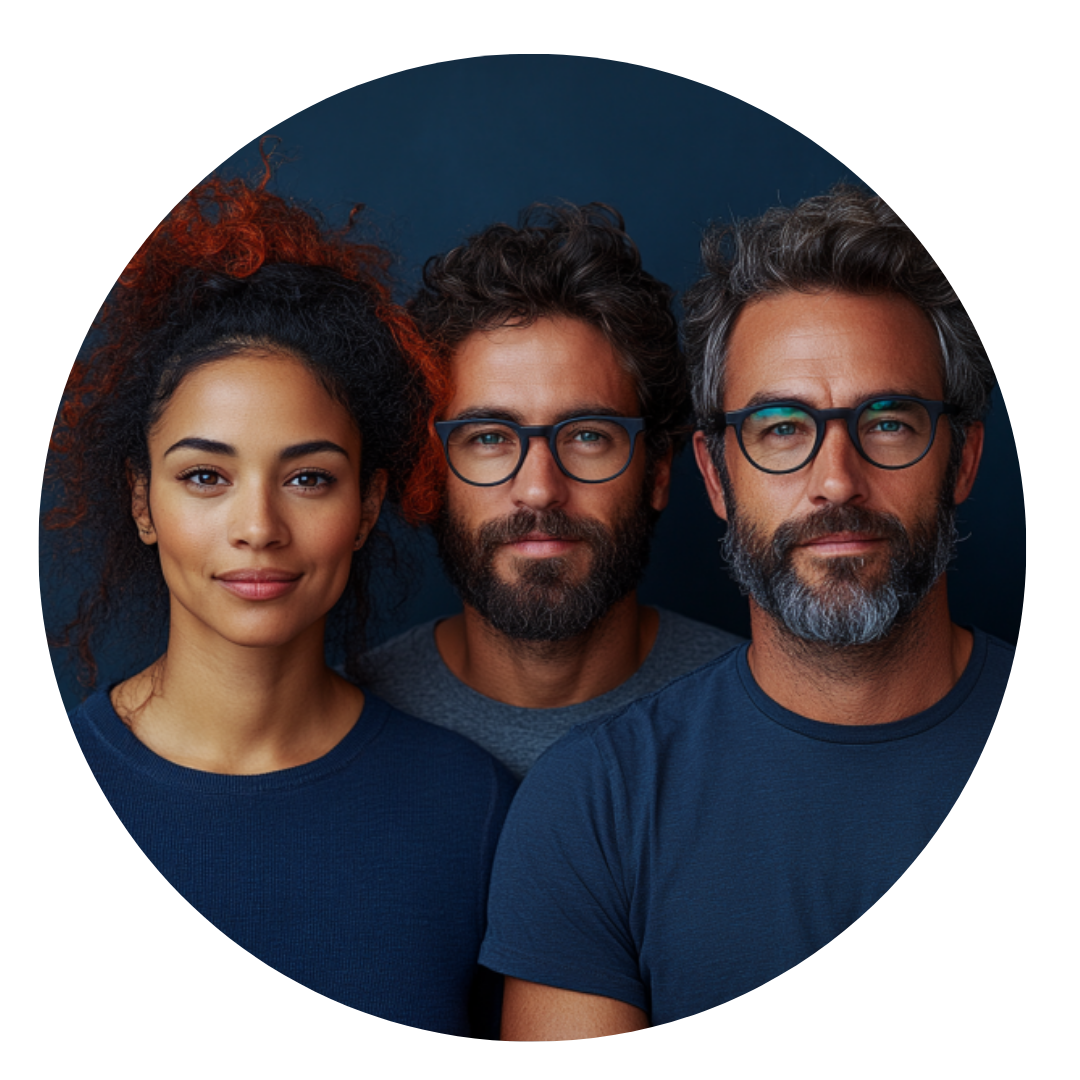Religious Marketing and Autism: Spiritual Community Outreach Strategies
The church bulletin announced a new sensory-friendly service with genuine excitement—dimmed lights, reduced music volume, fidget tools available, no...
3 min read
 Writing Team
:
Oct 9, 2025 4:52:43 PM
Writing Team
:
Oct 9, 2025 4:52:43 PM
-Oct-09-2025-08-52-02-8781-PM.png)
We spent forty minutes scrolling through a major stock photography platform searching for autism-related images. The results followed a depressingly predictable pattern: children wearing puzzle piece shirts, hands forming heart shapes, muted blue tones everywhere, and the same visual metaphor repeated endlessly—isolation, difference, something requiring fixing.
This isn't representation. It's visual shorthand that flattens the neurodivergent experience into marketable symbolism that serves neurotypical comfort more than autistic dignity.
Stock photography shapes public perception in ways we rarely acknowledge. When healthcare organizations, educational institutions, and advocacy groups need visuals for autism-related content, they turn to these libraries. The images they select become the default visual language through which society conceptualizes autism. And that language currently speaks in outdated, stereotype-laden dialect.
The puzzle piece motif dominates autism stock photography despite years of pushback from autistic self-advocates. The symbolism implies incompleteness, something missing, a person requiring assembly. This framing emerged from parent-led advocacy organizations decades ago—groups speaking about autistic people rather than listening to them.
Many autistic adults reject puzzle piece imagery entirely, yet it persists in stock libraries because it's visually recognizable, easily licensed, and aligned with mainstream charity narratives that emphasize tragedy over neurodiversity. Photographers keep producing it because marketers keep buying it. The cycle perpetuates itself.
The alternative—images of autistic people simply existing, thriving, working, creating—exists but requires intentional searching. These photos don't announce autism through symbolic props. They show humans living full lives while happening to be neurodivergent. That's harder to merchandise, apparently.
Browse autism stock photography and notice how often the subject appears alone. A child sitting apart from peers. An adult staring away from the camera. Someone positioned physically separate from family members in the frame.
This visual pattern reinforces the damaging narrative that autism equals loneliness, that neurodivergent people exist in fundamental isolation from human connection. It's a lie, but it's a profitable lie. Organizations fundraising around autism interventions benefit from imagery suggesting desperate need for outside rescue.
The reality: autistic people form deep relationships, build communities, experience profound connection—often most comfortably with other neurodivergent people. But stock libraries rarely show autistic joy, autistic friendship, autistic partnership. Those images don't align with prevailing narratives about autism requiring fixing.
Most autism stock photography features white children, particularly white boys. This reflects historical diagnostic bias and advocacy focus, but it actively harms by suggesting autism has a demographic profile when it doesn't.
Autistic adults exist. Autistic women and nonbinary people exist. Autistic people of color exist. Yet their representation in stock libraries remains minimal, which means marketing materials, educational resources, and media coverage default to narrow demographic presentation that excludes most of the autistic population from visual recognition.
When representation does expand beyond white male children, it often still relies on the same stereotypical visual grammar—the withdrawn posture, the averted gaze, the isolation. Diversity in who's photographed matters less if the framing remains identical across demographics.
Authentic autism representation in stock photography would show neurodivergent people in context—working, socializing, parenting, creating. It would capture stimming without framing it as aberrant. It would show sensory accommodations as normal adaptive tools rather than special interventions.
It would include photographs taken by autistic photographers who understand their subjects from lived experience rather than clinical distance. It would feature autistic models whose compensation and consent are prioritized, not just convenient subjects captured without meaningful involvement in how their images get used.
Better representation means images where autism isn't the story—it's simply part of the person in the frame. The accountant who happens to be autistic. The teacher, the engineer, the parent. People living dimensional lives rather than existing as visual metaphors for disorder.
Organizations creating autism-related content face a choice: perpetuate visual stereotypes because they're readily available and familiar, or invest effort finding imagery that reflects autistic humanity rather than reducing it.
That choice reveals values. When you select the isolated child over the thriving adult, the puzzle piece over the person, you're making a statement about how you conceptualize neurodivergence—as problem or as variation, as deficit or as difference.
Autistic people notice these choices. So do parents of autistic children, educators, healthcare providers—everyone forming their understanding of autism partially through visual media. The images you select either challenge stereotypes or reinforce them. There's no neutral position.
Stock photography will change when demand changes. Until marketers consistently reject stereotype-laden imagery and request authentic representation, photographers and libraries will continue producing what sells. The power to shift visual narratives sits with those commissioning and selecting images, not just those creating them.
We deserve better than puzzle pieces and isolation aesthetics. Autistic people deserve representation that honors their full humanity rather than flattening it into convenient symbolism. The images exist—you just have to choose them.
At Winsome Marketing, we specialize in autism and neurodivergent marketing that centers authenticity over stereotype. We'll help you develop visual strategies, messaging frameworks, and content approaches that resonate with neurodivergent audiences while avoiding the tired tropes that dominate mainstream autism representation. Let's build something better together.
-Oct-09-2025-08-54-18-2548-PM.png)
The church bulletin announced a new sensory-friendly service with genuine excitement—dimmed lights, reduced music volume, fidget tools available, no...

Let's talk about the advertising industry's autism problem.

Advertising to and about people with autism requires a delicate balance of authenticity, respect, and understanding. The narrative surrounding autism...